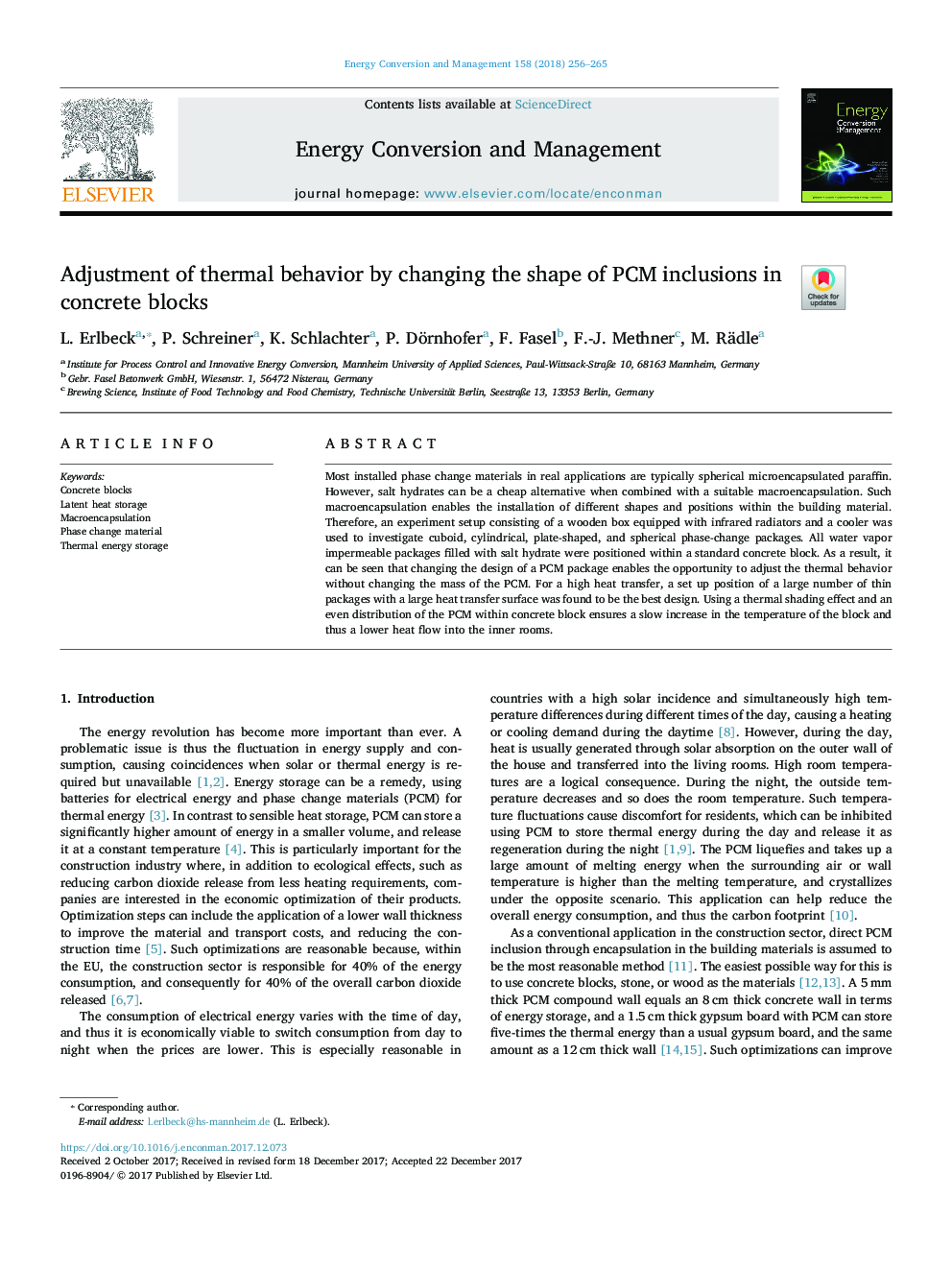| Article ID | Journal | Published Year | Pages | File Type |
|---|---|---|---|---|
| 7159223 | Energy Conversion and Management | 2018 | 10 Pages |
Abstract
Most installed phase change materials in real applications are typically spherical microencapsulated paraffin. However, salt hydrates can be a cheap alternative when combined with a suitable macroencapsulation. Such macroencapsulation enables the installation of different shapes and positions within the building material. Therefore, an experiment setup consisting of a wooden box equipped with infrared radiators and a cooler was used to investigate cuboid, cylindrical, plate-shaped, and spherical phase-change packages. All water vapor impermeable packages filled with salt hydrate were positioned within a standard concrete block. As a result, it can be seen that changing the design of a PCM package enables the opportunity to adjust the thermal behavior without changing the mass of the PCM. For a high heat transfer, a set up position of a large number of thin packages with a large heat transfer surface was found to be the best design. Using a thermal shading effect and an even distribution of the PCM within concrete block ensures a slow increase in the temperature of the block and thus a lower heat flow into the inner rooms.
Keywords
Related Topics
Physical Sciences and Engineering
Energy
Energy (General)
Authors
L. Erlbeck, P. Schreiner, K. Schlachter, P. Dörnhofer, F. Fasel, F.-J. Methner, M. Rädle,
